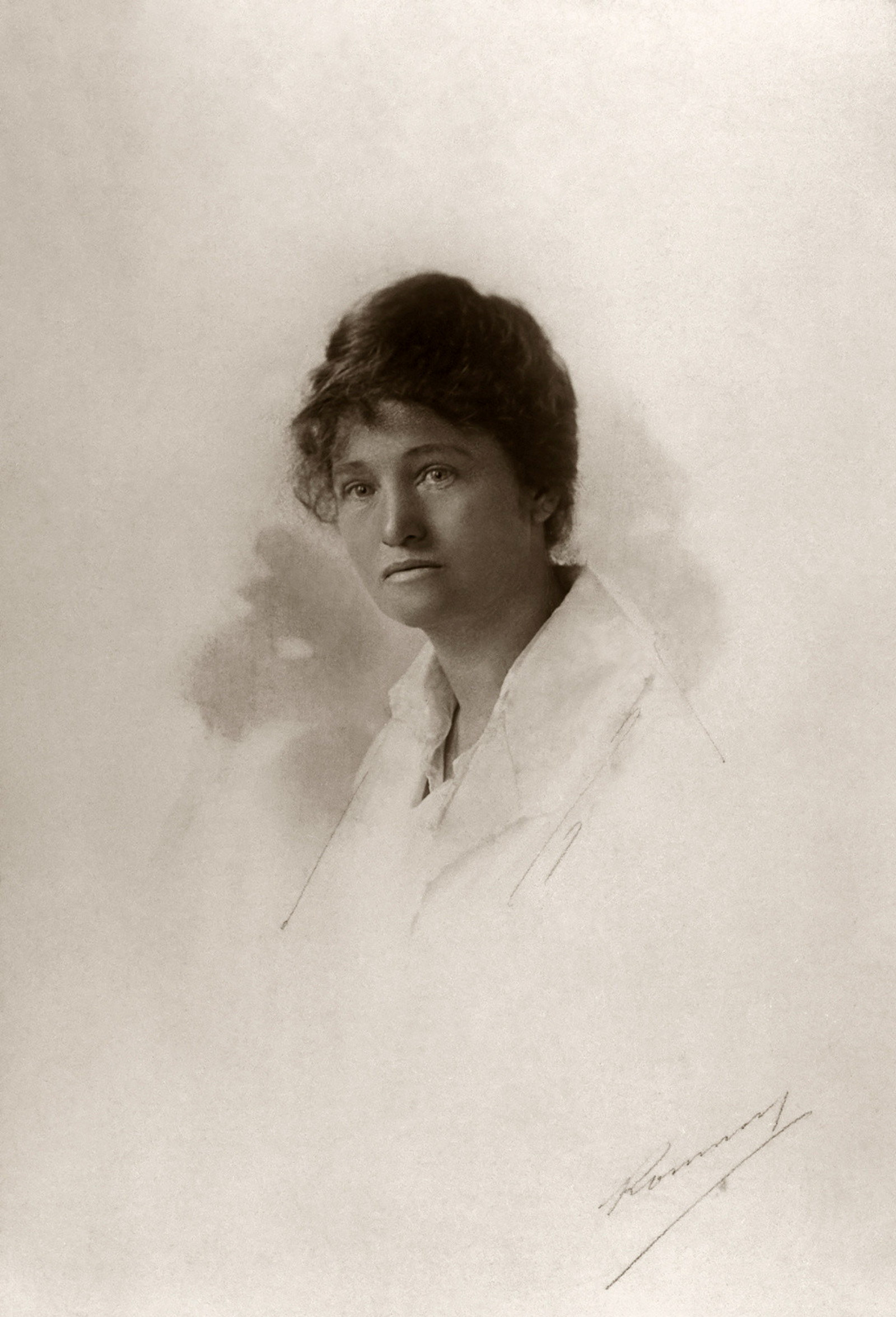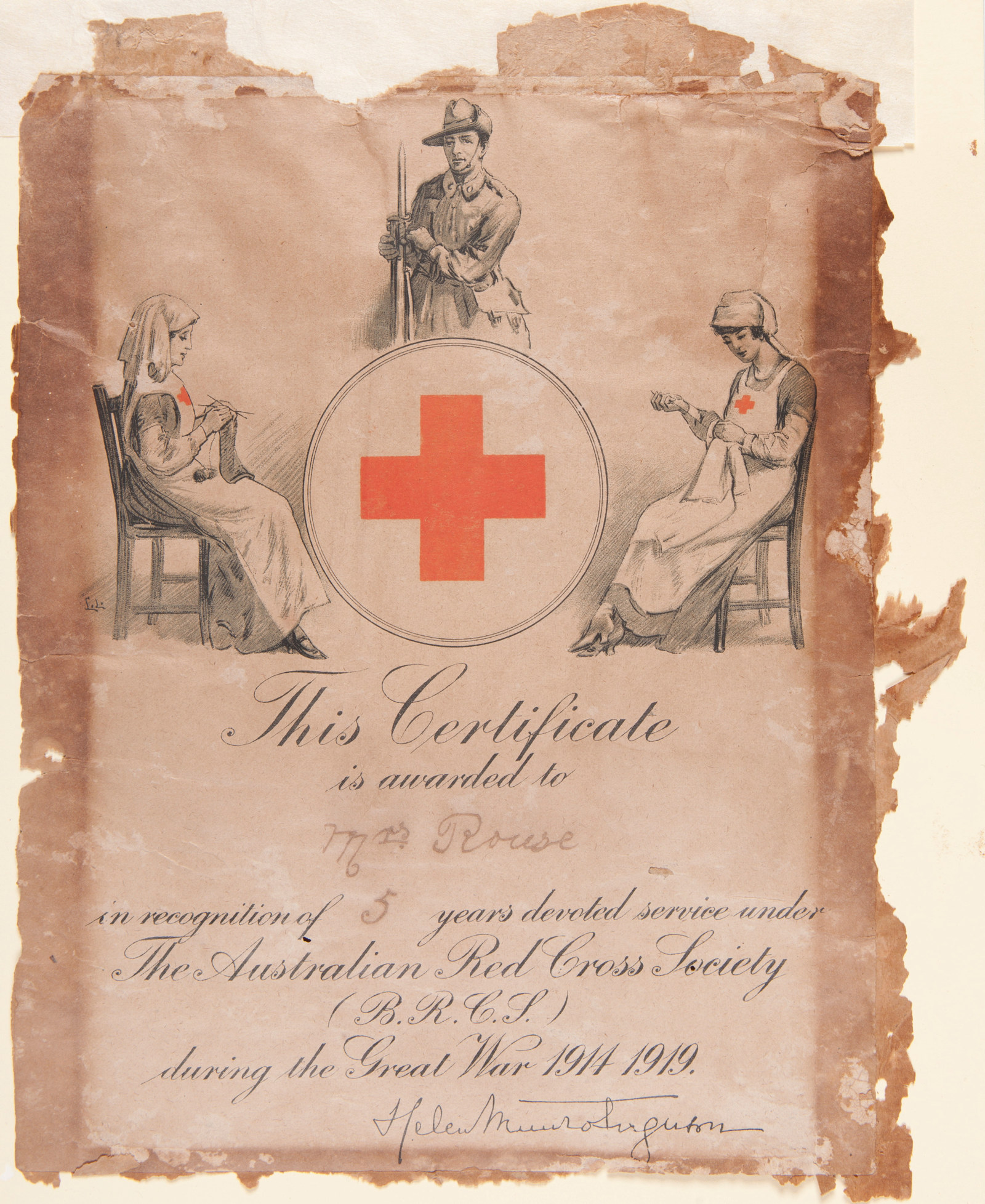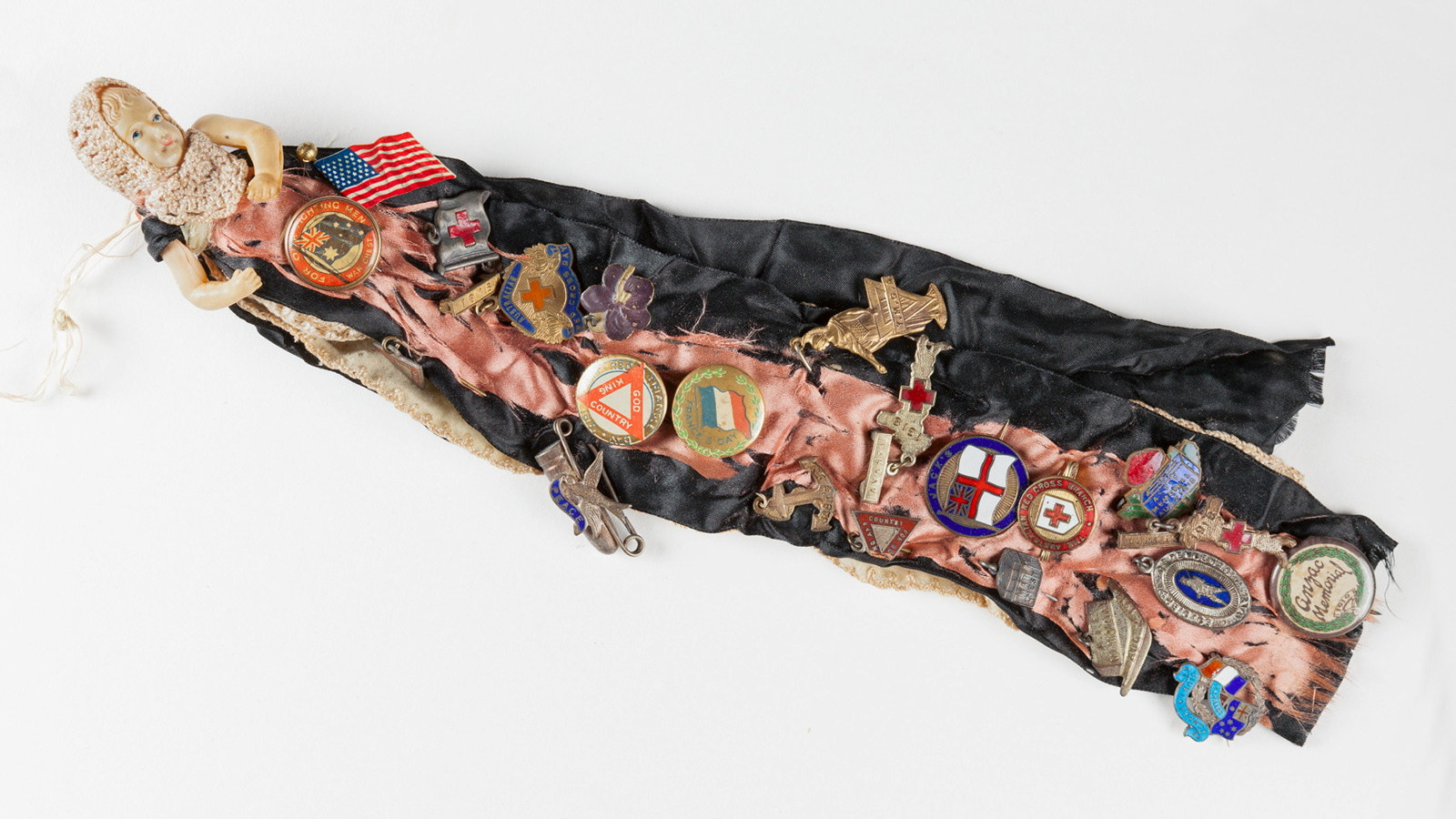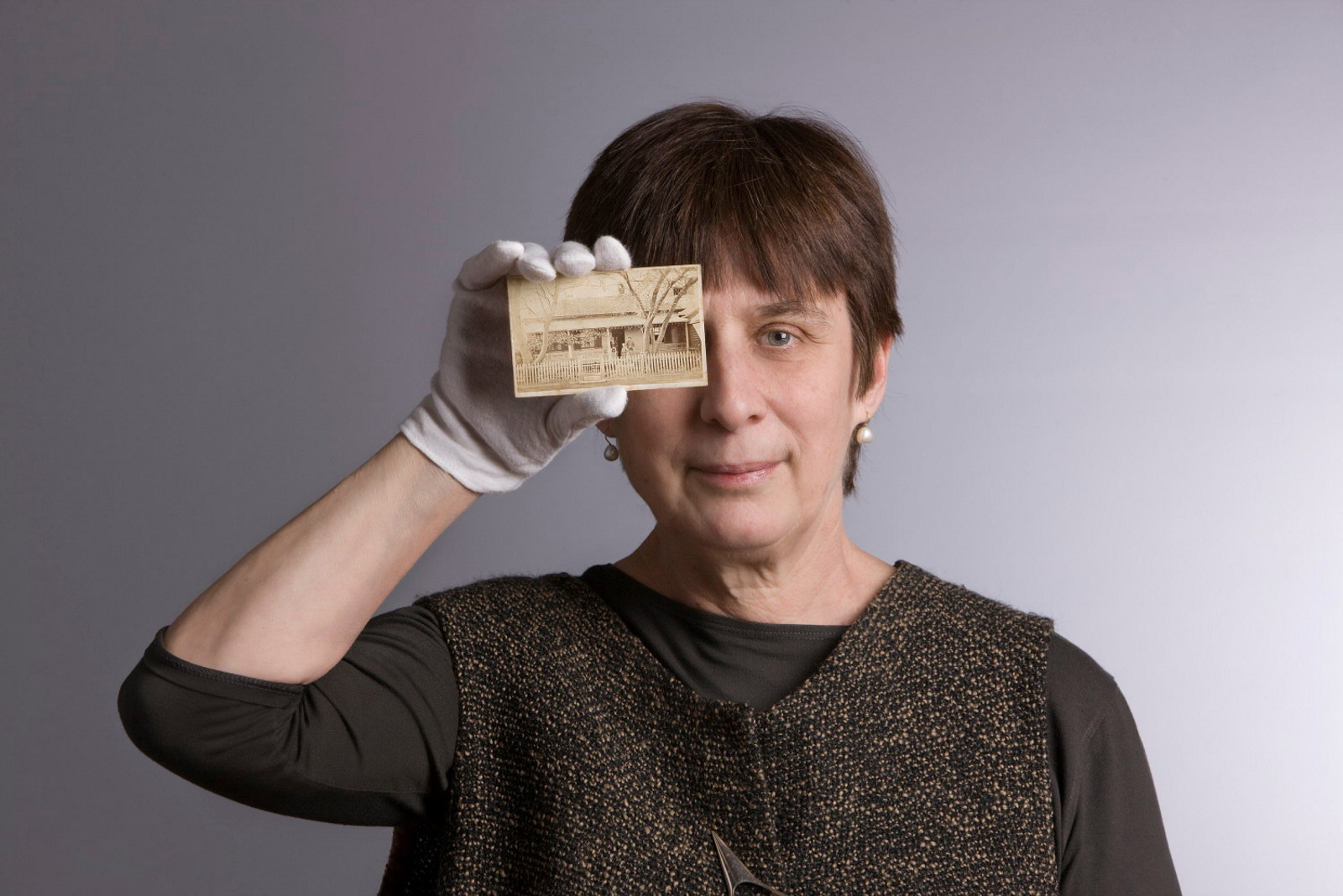Red Cross tearoom at Vaucluse House
On 2 October 1918 the Sydney Mail published a photograph of a Red Cross worker amid the wisteria of Vaucluse House, and explained that the women of the Vaucluse branch of the Red Cross had set ‘little snowy tables’ on the old flagged verandah of Vaucluse House and were serving tea to visitors every day while the wisteria was in bloom.
The branch began tearoom operations in May 1918, at the invitation of the trustees of Vaucluse House, who offered to arrange for gas to be installed in two rooms opening onto the western verandah, to provide hot water for making tea. Branch members found supporters to donate tables, table linen (including crochet centrepieces), big teapots, china and silverware.
The branch was well organised, with a strong record of fundraising. Since its establishment in August 1914, it had supported many special day appeals including Belgian Day, War Chest Day, Australia Day, Allies’ Day, Anzac Day, Red Triangle Day, France’s Day and Australian Red Cross Day. On these days the branch usually had a stall outside Farmer’s department store in Pitt Street. Locally in Vaucluse and Watsons Bay they ran raffles and organised fetes, tea parties and a type of evening event called a ‘continental’. They held a particularly successful ‘Vaucluse Patriotic Continental Evening’ in the grounds of Vaucluse House on 26 January 1915. Lanterns were strung from tree to tree, refreshments were served from the verandah, and after stirring patriotic speeches a crowd of over 3200 people were entertained by the Eastern Suburbs Band and Fraulein Jensen’s Danish Orchestra.
Outside ‘wisteria time’, the Red Cross opened the Vaucluse House tearoom only on Saturdays, Sundays and public holidays, but they also provided refreshments for special events. On the occasion of the annual Wentworth celebration, held on 26 October 1918, two weeks before the end of the war, they catered for 1000 people, including official guests, members of the press, a large number of schoolchildren and the general public. The branch ceased operations at Vaucluse House in March 1919, catering one final ‘continental’ in support of the local repatriation committee.
The verandah tearoom had proved a profitable venture, and since the Vaucluse Park trustees were keen that it should be maintained, the branch sold their equipment, supplies and furnishings to one of their members, who took on the operation in partnership with a friend. The branch disbanded on 1 August 1919. The wisteria tearoom continued in operation until 1925.
Published on
More

WW1
Isabel Swann: the Women’s Peace Army & free speech
An ardent peace activist, an anti-conscription campaigner and defender of free speech

WW1
Bessie Rouse and the Kellyville-Rouse Hill Red Cross
Eliza Ann Rouse, affectionately known as Bessie, mistress of Rouse Hill House, was in her early seventies when war was declared in August 1914

WW1
A patriotic fundraising memento
This tiny celluloid doll, just 10 centimetres in height and clothed in panels of ribbon, is showing her age
